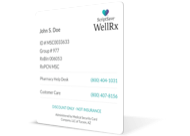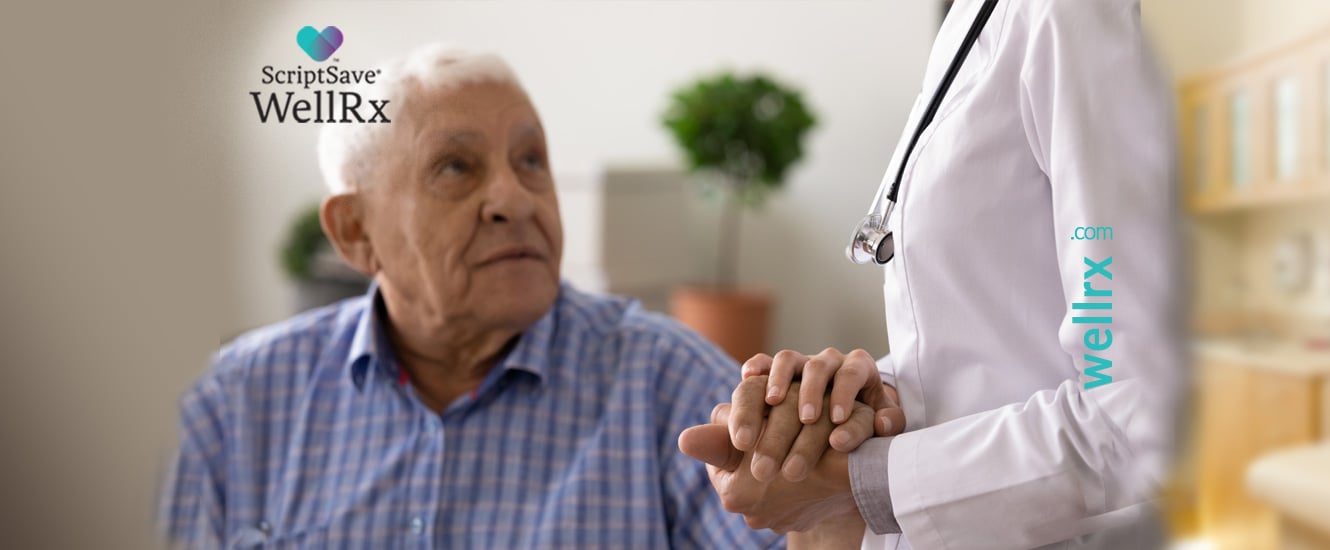Copyright 2024
Medical Security Card Company, LLC
All Rights Reserved
WellRx will never sell your personal information. Period. By signing up I agree to WellRx's terms of use and privacy policy.
by Tek Neopaney,
University of Arizona College of Pharmacy Student
March 29, 2018
Each year, millions of Americans, who may otherwise feel fine, are diagnosed with Osteoporosis. Developing osteoporosis puts people at higher risk for fractures, especially in the hips, spine, and wrists. Women are at much higher risk, with 10 percent of women age 50 and older affected by osteoporosis, compared with just two percent of men that age.
Osteoporosis is defined by low bone mass that results in decreased bone density, and bones become more prone to fracture. Osteoporosis often has no symptoms until there is a bone fracture. Bone strength decreases with the loss of bone mass, which is related to many factors such as, a decrease in bone mineral density, rate of bone formation and turnover, and the shape of the bones.
Postmenopausal women often have low bone density due to estrogen deficiency. With early diagnosis of bone loss and fracture risk, available therapies can slow or even reverse the progression of osteoporosis and help prevent bone fracture1. Vertebrae and hip fracture is common in osteoporosis patients. About two-thirds of the bone fractures are asymptomatic2, meaning patients won’t even be aware they have a fracture. Many patients without symptoms assume they don’t have osteoporosis, so it’s important for all post-menopausal women to get an osteoporosis evaluation.
If you are unable to achieve adequate amounts of calcium and vitamin D from diet alone, you should take supplements for bone growth and development. Children ages 9 to 18 should consume approximately 1300 mg of calcium per day from calcium rich food sources, and 600 mg of vitamin D from vitamin D-fortified food. Children who have a wide variety of foods in their diet, and are growing well, should not need calcium and vitamin D supplementation3. Calcium and vitamin D supplementation likely only benefits children with inadequate calcium and vitamin D intake3.
Most postmenopausal women with osteoporosis, 1200 mg calcium (total dietary and supplement) and 800 international units of vitamin D are recommended. Although optimal intake of calcium (diet plus supplement) for pre-menopausal women and men with osteoporosis is not established, generally suggested doses are 1000 mg of calcium (diet and supplement) and 600 international units of vitamin D4.
Exercise is strongly associated with a reduction in hip fractures in older women5. Regular exercise has shown to have positive effect on bone mineral density (BMD). BMD is the measure of calcium in your bone. In studies, a variety of exercises such as, jogging, resistance training, swimming, and walking were effective. Women with osteoporosis should exercise for at least 30 minutes a day, three days a week, to build bone strength and help prevent fractures. Exercise helps to increase muscle strength, reducing the risk of fracture from fall.
In addition to lifestyle measures and calcium and vitamin D supplementation, patients at high risk for fractures should also receive drug therapy. Patients with a history of fragility fracture or osteoporosis based on BMD, benefit from medication. All patients treated with medication should have a normal calcium and vitamin D level prior to starting drug therapy, and should also receive vitamin D and calcium supplements if their dietary source is inadequate6.
Oral bisphosphonates such as, alendronate (Fosamax), ibandronate (Boniva) are the first line of therapy for postmenopausal women. These agents decrease the rate of bone breakdown leading indirectly to an increased BMD. Bisphosphonates are effective, inexpensive, and have long-term safety data on preventing hip and vertebrate fracture6. These drugs are usually taken once a weekly.
With so many Americans developing osteoporosis, it’s important to realize it could happen to you, so talk to your doctor about your risks. To help prevent, and possibly reverse Osteoporosis:
References:

For your convenience, use the ScriptSave® WellRx mobile app. Now savings are well in hand, right at the pharmacy counter. Save on your family's prescription medicines.
Learn More
Your choice. Get a ScriptSave WellRx Savings Card. Or Download the free mobile app from the App Store or Google Play Store
Get A Card
ScriptSave WellRx Grocery Guidance leverages leading-edge nutritional data science to help you know which food products on your grocery store shelf are truly good for YOU.
Healthy Foods For YouTags:

June 09, 2022

April 26, 2022
You need to log into the site to use this feature
This feature requires registration. Sign up or log in to your free WellRx account to gain access to this and other tools to help make managing your medications and wellness easier.
Benefits Include:
 Store & manage your medication list
Store & manage your medication list
 Medication pricing updates
Medication pricing updates
 Medication information
Medication information
 Pill & refill reminders
Pill & refill reminders
 Medication journal & mood log
Medication journal & mood log
This feature requires registration. Sign up or log in to your free WellRx account to gain access to this and other tools to help make managing your medications and wellness easier.
Benefits Include:
 Store & manage your medication list
Store & manage your medication list
 Medication pricing updates
Medication pricing updates
 Medication information
Medication information
 Pill & refill reminders
Pill & refill reminders
 Medication journal & mood log
Medication journal & mood log
You will be redirected to your program in 5 seconds.
Our Terms and Conditions and Privacy Policy have recently been updated.
By declining you will be logged out of your account